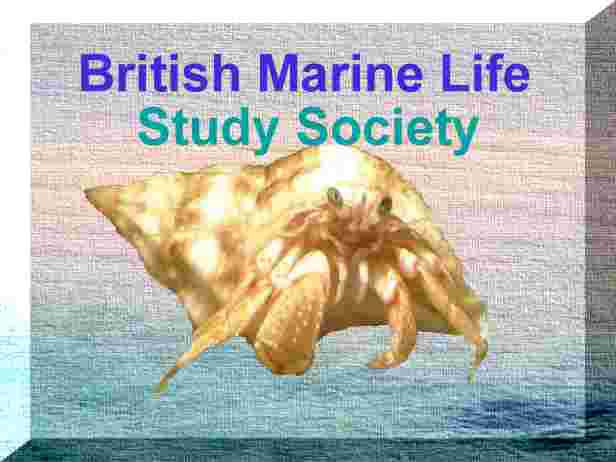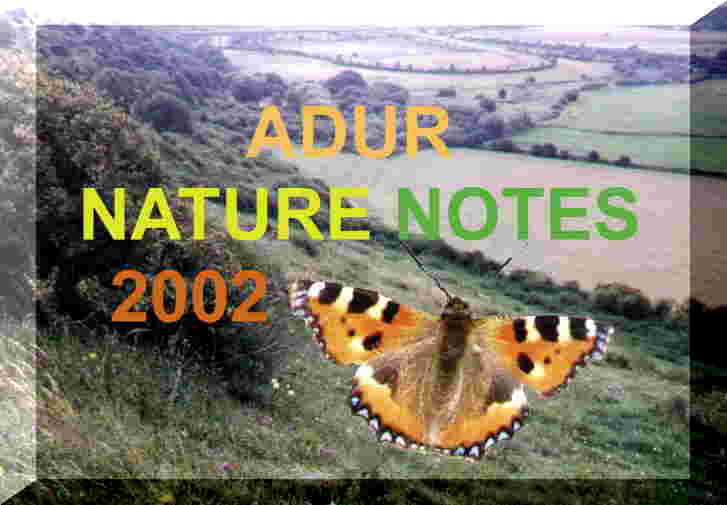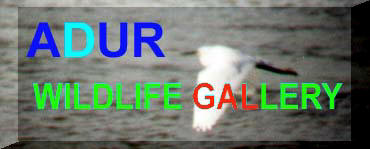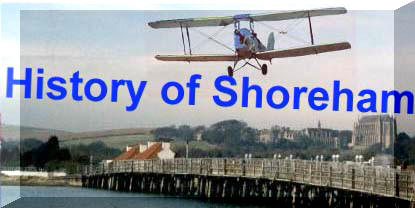
|
NEWS BULLETIN FOR THE ADUR VALLEY |
 |
| LOCAL
ORGANISATIONS |
| LOCAL RESIDENTS PAGE |
| Adur Flood Plain |
| Chalk Downs |
| Coastal Fringe |
| Intertidal (Seashore) |
| Nature
Notes for
Lancing Ring |
| River Adur Estuary |
| River Adur |
| Sea (off Sussex) |
| Town & Gardens |
| Widewater Lagoon |
| AREA MAP |
| Shermanbury (Adur Valley) |
| WSCC LIBRARY |
|
|

This is the first published
Electronic Newspaper for
Shoreham-by-Sea and the
Adur Valley & District, West Sussex, England
Local News
8 October 2002
Adur World Oceans Day meetingShoreham Herald: 17 October 2002
Clubs and societies are invited to hold an evening Adur World Oceans Day event.
Please send any comments to: Andy Horton
Glaucus@hotmail.com
Wildlife Notes
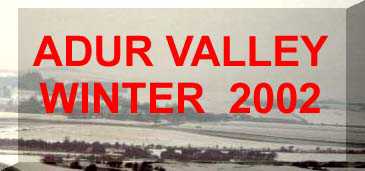 |
 |
 |
 |
11 October 2002
A Robin singing from the top of a Hawthorn Bush, on a warm afternoon that felt like spring, if it was not for the red berries. Also on the cycle path from Old Shoreham to the disused cement works at Beeding, a Pheasant crossed my path. There were 30+ Redshanks on the estuary by the railway viaduct and hundreds of Lapwings. Pied Wagtails returned to Shoreham town in ones and twos.
Adur Levels
Early in the morning a couple of Butterfish hid under rocks on the estuarine part of Kingston beach.9 October 2002
There was a mallard-sized duck on Kingston Buci beach (entrance to Shoreham harbour by the lighthouse) at midday, a couple of hours before the high 6.7 metre spring tide (i.e. very high water). I did not have my bins and the duck was silhouetted. I had it penned as an Eider or a Scoter from a distance of about 200 metres. It was just resting on the flat sea.
The SOS consider Eiders Ducks and Scoters to be Winter Visitors (WV) &/or Passage Migrants (PM), of scarce occurence except for Common Scoters, which are fairly common. (Small flocks of Common Scoters have been observed resting on the sea from Southwick beach in January.)
However, on 7 October 2002 a female Velvet Scoter was seen on her own five metres offshore near Shoreham Power Station at 1:06 pm.Scoter Report by Marc Granville via Sussex Ornithological NewsAdur Valley Wildlife Internet Resources7 October 2002
As the high tide reached it's peak at around 12:15 pm the percolation effect could clearly be seen at the western end of the Lagoon. As the rising tide pushes it's way through from the seaward side, trapped air is expelled. In many places the along the southern edge of the lagoon air bubbles rapidly rose to the surface as if the water was boiling. In at least two places, seawater springs emerged from the lagoon edge. Black and green algal growth clustered around the slow trickle.
On the adjacent beach, as the sun shone warmly, the sea was flat enough to skim pebbles on the surface. The fear of a low pressure weather system corresponding with an unusual high tide did not materialise.A Comma Butterfly patrolled the sheltered leeward side of the bank while at the top of the bank a Clouded Yellow Butterfly took advantage of the clusters of Michaelmas Asters which also attracted bees to one of the seasons last nectar sources.
Widewater Page (by Ray Hamblett)
Widewater Images for September 2002 (by Ray Hamblett)
Adur ButterfliesAfter a month of minimal rain and with Indian Summer summer preceding some of the highest and lowest equinoctial spring tides for over 20 years, I visited Widewater Lagoon, 1½ hours after the midday high spring tide of 6.8 metres. The bubbles of percolating seawater had ceased by then and the only water commotion was caused by a small flock of Ringed Plover. There was a band of about 40 cm of wet mud (west of the bridge) where it looked as though the water had recently receded. The lagoon level was higher than that of a month ago, as the separate westerly lagoon was a continuous sheet of water, but still scarcely more than a large puddle. The air temperature was recorded at 21° C and water temperature in the lagoon at 16.5° C. The specific gravity reading in the main channel was about 1.018 at 20° C (accurate home laboratory testing) which gives a salinity of about 26‰ (ppt) which is into the brackish range that could support cockles and other marine organisms. There were thousands of small prawns in the lagoon.
Widewater Salinity
6 October 2002
Approaching midnight, 11:00 pm, an urban Fox trotted across Ham Road in the centre of Shoreham and into the grounds of the Old Schoolhouse.With Indian Summer summer preceding some of the highest and lowest equinoctial spring tides for over 20 years was too good a rockpooling chance to miss as low tide receded to Chart Datum about 6:00 pm, just before an attractive red sunset.
The low tide on Lancing beach revealed shallow pools and rocks covered in weed, but it was the push-net in shallow water that provided the most interesting discoveries including an attractive Little Cuttlefish, Sepiola, that squirted five dollops of ink in the temporary aquarium, and my very first discovery of the South-claw Hermit Crab, Diogenes pugilator, on the Sussex coast.
Full ReportPhotograph by Ray Hamblett
of a Rockling caught by Jan and Katherine Hamblett
on 6 October 2002
The blue butterfly season is over but this morning there were about 10 Small Tortoiseshell Butterflies and an immigrant Clouded Yellow up Mill Hill, where a Wasp Spider, Argiope bruennichi, was discovered near its previous location.
Report by Ray Hamblett (Lancing Nature)Ray Hamblett's Mill Hill web page (with photographs of spiders and orchids and other wild plants)6 October 2002
A blue butterfly fluttering around the Ivy behind Lancing Library was probably a third brood Holly Blue Butterfly.Report by Ray Hamblett (Lancing Nature)Lancing Nature Nature News (October 2002)5 October 2002
Previous Seal Report 2002
Down the beach this morning to check the sea state for diving when I noticed I was being watched by a seal, bobbing in front of me. I first saw it in the surge five metres from the shore, in front of the new sea defence works, east of the Widewater Lagoon. A fisherman in a boat must have just passed the seal moments before I had arrived, maybe he gave the seal some titbits?
It was a Harbour (Common) Seal, Phoca vitulina, as I have photographed Grey Seals many times and this seal is different.
BMLSS Seals
Seas off Sussex
Grey Seal Report 19964 October 2002
Although reported before, today was the first time time I had seen a Little Egret on Kingston beach, wading about in a shallow pool on the low neaps, before flying eastwards to sandy part of the shore. The Little Egret was preening and it was not seen to attempt to feed. Under the rocks there were numerous (50+) young Rock Gobies, about 650 mm long, which would provide a tasty snack for the long beak of the Egret, as well as thousands of very small prawns in the shallow pools.On the waterline an Oystercatcher probed, and the bright orange legs of a junior Redshank contrasted with the dark red legs of the Black-headed Gulls. A Cormorant fanned its wings and there were at least a couple of Great Black-backed Gulls, but I would be surprised if they weren't present.
3 October 2002
Adur Butterflies
Warm sunshine brought out he best of the vivid colour of male Clouded Yellow Butterfly, Colias croceus, on vegetated shingle at Shoreham Beach (TQ 210 044) and another at the derelict Ropetackle site (TQ 212 052). And a Common Darter Dragonfly, Sympetrum striolatum, Common Lizard and Slow Worms were seen basking amongst flotsam on the banks of the River Adur (TQ 208 058).The Hedgehog has returned to my front garden in Corbyn Crescent, Shoreham.
(TQ 224 053).A large jellyfish at least one metre in diameter was spotted in the River Adur underneath the footbridge at 10:00 am moving seawards, swimming actively with the ebbing neap tide. It had a milky white bell with a salmon-pink petticoat and frilly white tentacles. This is probably the Barrel Jellyfish, Rhizostoma octopus.
Report by Hayley Packer
The common Garden Orb Spider, Araneus diadematus, are spinning numerous and extensive webs and it would seem that the few remaining butterflies would find it it hard not to blunder into these traps, but there are a few Large Whites and Red Admirals flying strongly around in Shoreham town and Shoreham beach.
The conkers on the Horse Chestnut Tree are attracting the kids, as they successfully throw branches up the tree to dislodge the conker nuts from the tree on the south side of the road opposite Lancing Manor.
ADUR VALLEY NATURE NOTES 2001 WINTER Nature Notes 2001 JANUARY - MARCH SPRING Nature Notes 2001 APRIL - JUNE SUMMER Nature Notes 2001 JULY - SEPTEMBER AUTUMN Nature Notes 2001 OCTOBER - DECEMBER
- British
Web Sites
Dragonflies
of the Hampshire & Surrey Borders
Flight
Times (First Seen)
- Historical
Snippets
Thundersbarrow (north of Hammy Lane, Shoreham) has now been dated from the late Bronze Age for its early stages of construction.
NEW
BOOK
Ref:
Prehistoric
Sussex by Miles Russell [Tempus 2002] ISBN 0 7524 1964
1 (p. 109)
Adur Valley Book List
- Words
of the Week
barrow
| bar | n.1 See also BERRY n.2, BURROW n.3 [OE beorg = OFris., OS,
OHG (Du., G) berg, f. Gmc. Cf. ON berg, bjarg rock, precipice, Goth. bairgahei
hill country.] 1 A mountain, a hill. obs. exc. as forming a place-name
element. OE. 2 Archaeol. A grave-mound or tumulus. OE.
2 round barrow: see ROUND
a.
Comb.: barrow-wight pseudo-arch.
a guardian spirit believed to inhabit a grave-mound.
---------------------------------------------------------
Excerpted
from The Oxford Interactive Encyclopedia
Developed
by The Learning Company, Inc. Copyright (c) 1997 TLC Properties Inc.
- Tucows
Software Reviews

|
Web
Monkey :
The Web Developer's Resource
Location:
http://hotwired.lycos.com/webmonkey/
Digital
Photography Review
http://www.dpreview.com/
The default files created
have the suffix *.html so anybody using the program has to be a little
bit cautious about overwriting existing files.
Computing
Net Support Site
(for computing problems) ****
http://computing.net/windows95/wwwboard/wwwboard.html
The upsurge of EForaon
all subjects (a
few have been recommended before in these bulletins) are an important way
in which the Internet
will change the world.
A list of recommended eFora
are shown in the left hand column. Please make any suggestions.
Smart
Groups
At
present almost all groups are receiving sustained attacks by spam mail
(junk mail) which is a serious nuisance.
Fight
Spam on the Internet
http://spam.abuse.net/
LiteratureTo Nobodaddy
Why art thou silent and invisible,
Father of Jealousy?
Why dost thou hide thyself in clouds
From every searching eye?
Why darkness and obscurity
In all thy words and laws,
That none dare eat the fruit but from
The wily Serpent's jaws?
Or is it because secrecy gains females' loud applause?William Blake
Image Gallery

Saltings (Adur Overflow Pool) with Adur Recreation Ground in the background
Photograph by Ray Hamblett

Religion in the Adur District (Churches)
Archaeology in Sussex to AD 1500 ****
WSCC
LIBRARY *****
Excellent
and essential service with a full catalogue of books, CDs, videos, on-line
renewals, book ordering.
- The
Glaucus 2000 CD-ROM includes the complete Shoreham-by-Sea
and Adur
Valley web sites, as well as shareware and free programs

ADUR VALLEY EFORUM PAGE |
Events19 October 2002
Friends of Lancing Ring Coffee Morning
It will be held at the parish hall of The Holy Family Catholic Church in North Road, Lancing from 10 am to 12.00 noon.The event will feature bring and buy tables and a raffle. It is an opportunity to talk to the friends about the care of our local wildlife.
- Adur
On-line Events page
- http://appspace.nexus-solutions.net/arc/asp/diary/diaryoutput.asp
- Please send in any details of local events.
- Web
Sites
American
Heritage Dictionary of the English Language:
Fourth
Edition *****
- SPONSORSHIP OPPORTUNITY
For any company or organisation wanting nationwide green publicity, there is an opportunity to sponsor the journal "Glaucus" of the British Marine Life Study Society.
There remains sponsorship opportunities on the BMLSS (England) web site and other publications, including Torpedo.
Sponsorship is also available for the Adur Torpedo Electronic News Bulletin and the Shoreham-by-Sea web pages (which preceded the Adur Resource Centre web site), which would be more suitable for a local firm(s).
Web Site Design Services are available from Hulkesmouth Publishing
Normal
advertisement rules apply.
Submissions
accepted by EMail only.
Adur Torpedo was written, designed and distributed by Andy Horton.

